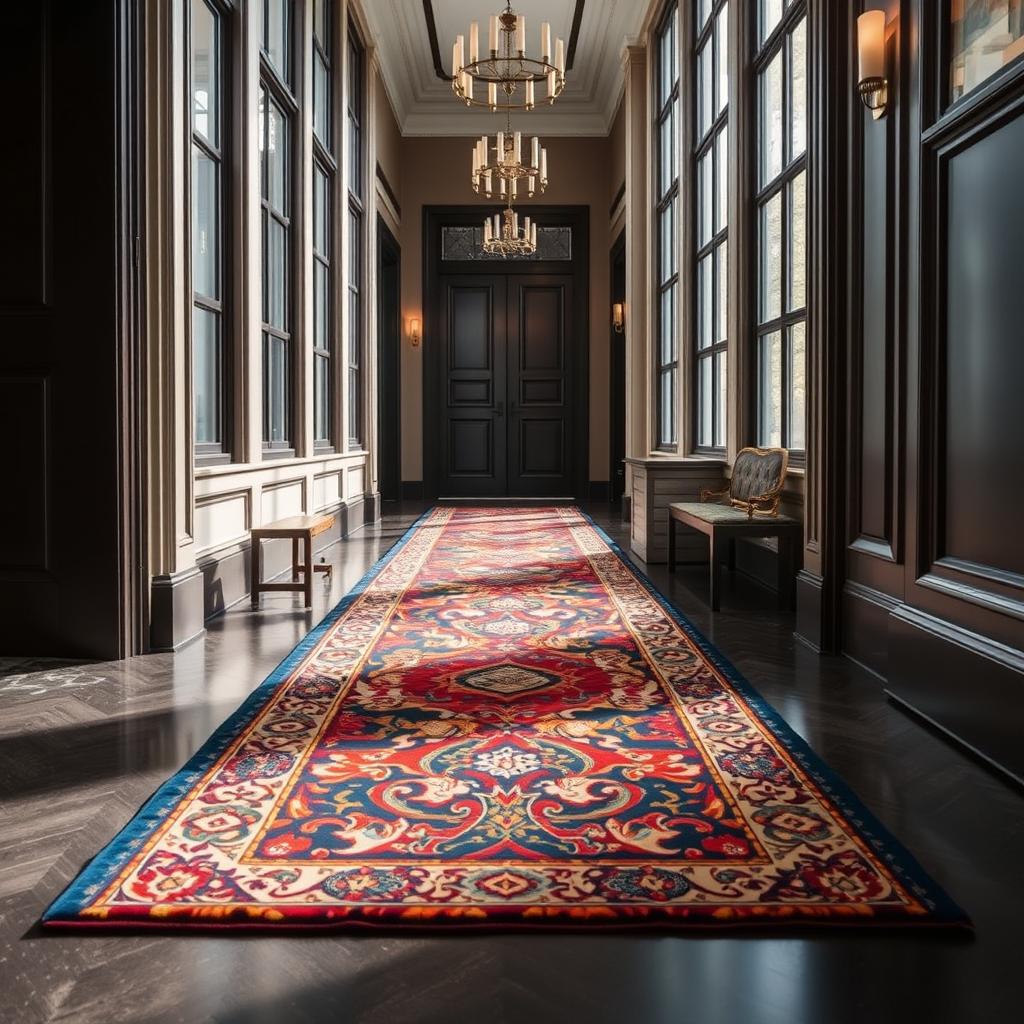A runner or runner rug is long and narrow, often rectangular. They are great for long, tight spaces in your home.
So, why choose a runner carpet for your home? How can it improve your space’s style and function? This guide will show you how runner carpets add elegance and versatility to your home.
Click to use Silverigroup personal shopper services
Key Takeaways:
- Runner carpets are long and narrow, making them perfect for hallways, stairs, and entryways.
- They come in a variety of materials, colors, and patterns to suit any decor style.
- Runner carpets can protect your floors and provide a soft, comfortable surface underfoot.
- Proper placement and installation of a runner carpet can enhance the flow and aesthetic of a room.
- Maintaining and caring for a runner carpet is essential to keeping it looking its best.
Want to know more about runner carpets? How they can enhance your home? Let’s explore their benefits, uses, and tips for choosing and installing the perfect runner carpet for your space.
Understanding Runner Carpets and Their Purpose
Carpet runners, also known as floor coverings or entryway mats, are special rugs for homes. They fit in narrow spots like hallways and stairs. They protect floors and make spaces look better.
Types of Runner Carpets Available
Runner carpets come in many styles and materials. They match different tastes and needs. Here are some common types:
- Traditional woven runners with classic patterns
- Contemporary, minimalist runners with solid colors or simple motifs
- Plush, high-pile runners for a cozy, luxurious feel
- Low-profile, flat-weave runners for a sleek, streamlined look
Click to buy citric acid from Silvairgroup
Common Dimensions and Sizes
Runner carpets usually are 2 to 4 feet wide and 6 to 20 feet long. You can also get custom sizes. Longer ones fit hallways, while shorter ones are great for entryways and stairs.
Material Options for Runner Carpets
Runner carpets are made from different materials. Each has its own benefits. Here are some common ones:
- Wool: Soft, durable, and naturally stain-resistant
- Synthetic fibers (e.g., nylon, polyester): Affordable and easy to clean
- Natural fibers (e.g., jute, sisal): Eco-friendly and provide a rustic appeal
Choosing the right material depends on how you plan to use it and your personal taste.
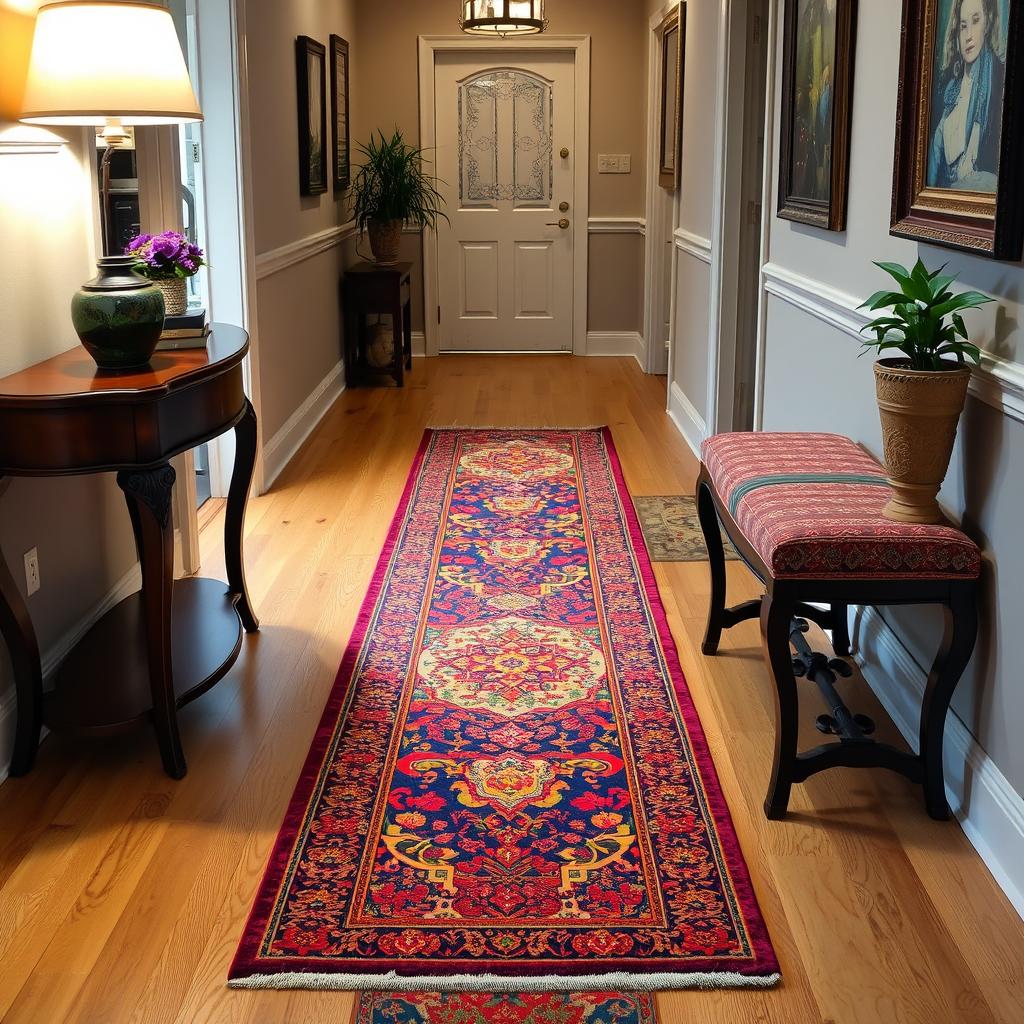
Benefits of Installing Runner Carpets in Your Home
Runner carpets can make your home look and feel better. They are great for hallways, stairways, and entryways. These floor coverings can change how your indoor spaces look and feel.
Runner carpets make walking more comfortable. They are soft and cushioned, making your home feel warm and inviting. This is especially good in places where lots of people walk by.
They also help reduce noise. Runner carpets soak up sound, making your home quieter. This is great for hallways and stairs where sounds can echo.
Runner carpets protect your floors from damage. They are built to last, helping your hardwood, tile, or laminate floors stay in good shape. This means your floors will look great for longer.
Runner carpets can also make your home look better. They come in many colors, patterns, and styles. You can use them to match your decor, add elegance, or start a new design.
Click to buy frozen a grade beluga fish from Silverigroup
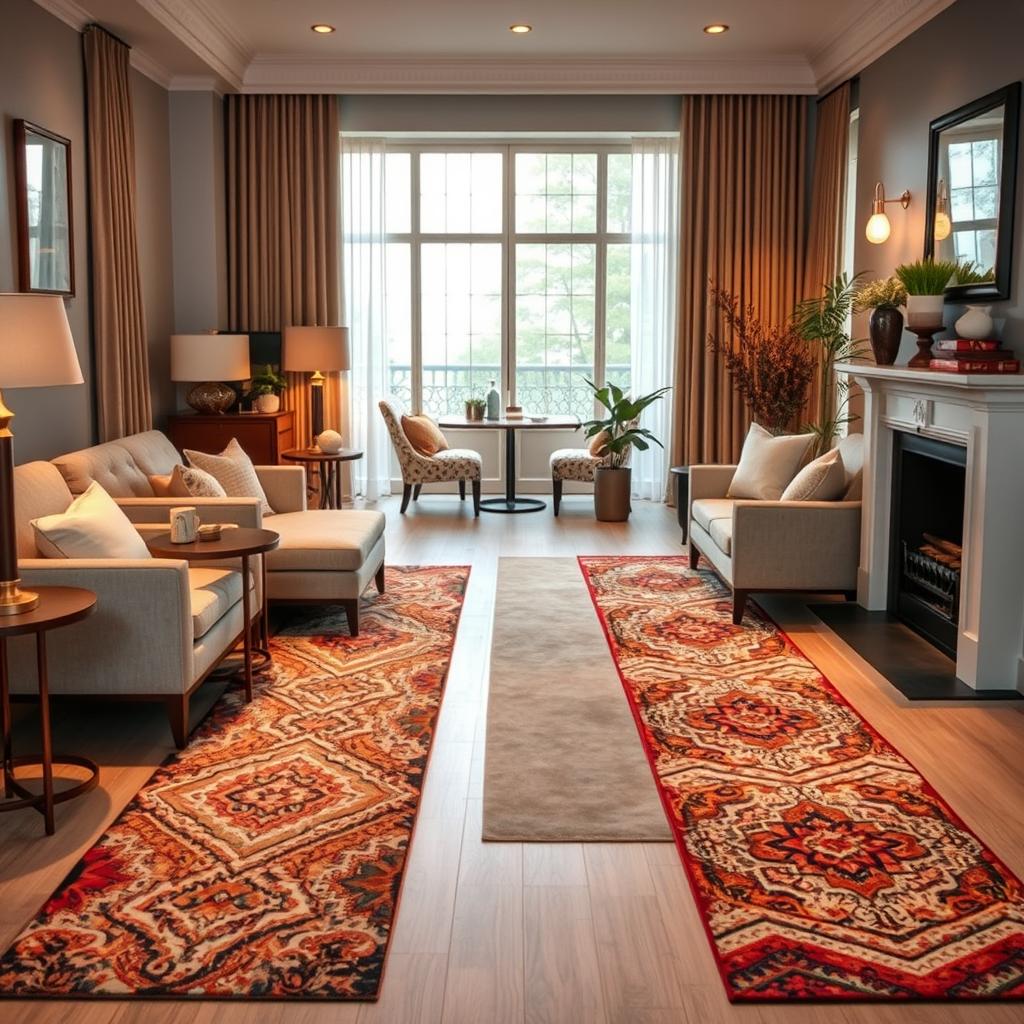
Runner carpets can improve comfort, reduce noise, protect floors, and enhance your home’s look. By choosing the right one, you can make your home feel more welcoming and stylish.
Perfect Locations for Runner Carpet Placement
Runner carpets can really make your home look and feel better. They are long and narrow, perfect for certain areas. Let’s look at where long hallway carpet runners and hallway runner rules work best.
Hallway Installation Guidelines
Hallways are great for runner carpets because they get a lot of use. Choose a carpet that fits well, leaving a bit of floor on each side. This makes your hallway look good and feel cozy.
Staircase Applications
Runner carpets are also great for stairs. They make stairs safer and look better. Make sure the runner is stuck down well to avoid slipping. Pick a pattern and color that matches your home.
Entryway Setup Tips
Entryways are another smart place for runner carpets. They help protect your floors and make a nice first impression. Place the runner so it’s easy to walk around and doesn’t cause tripping.
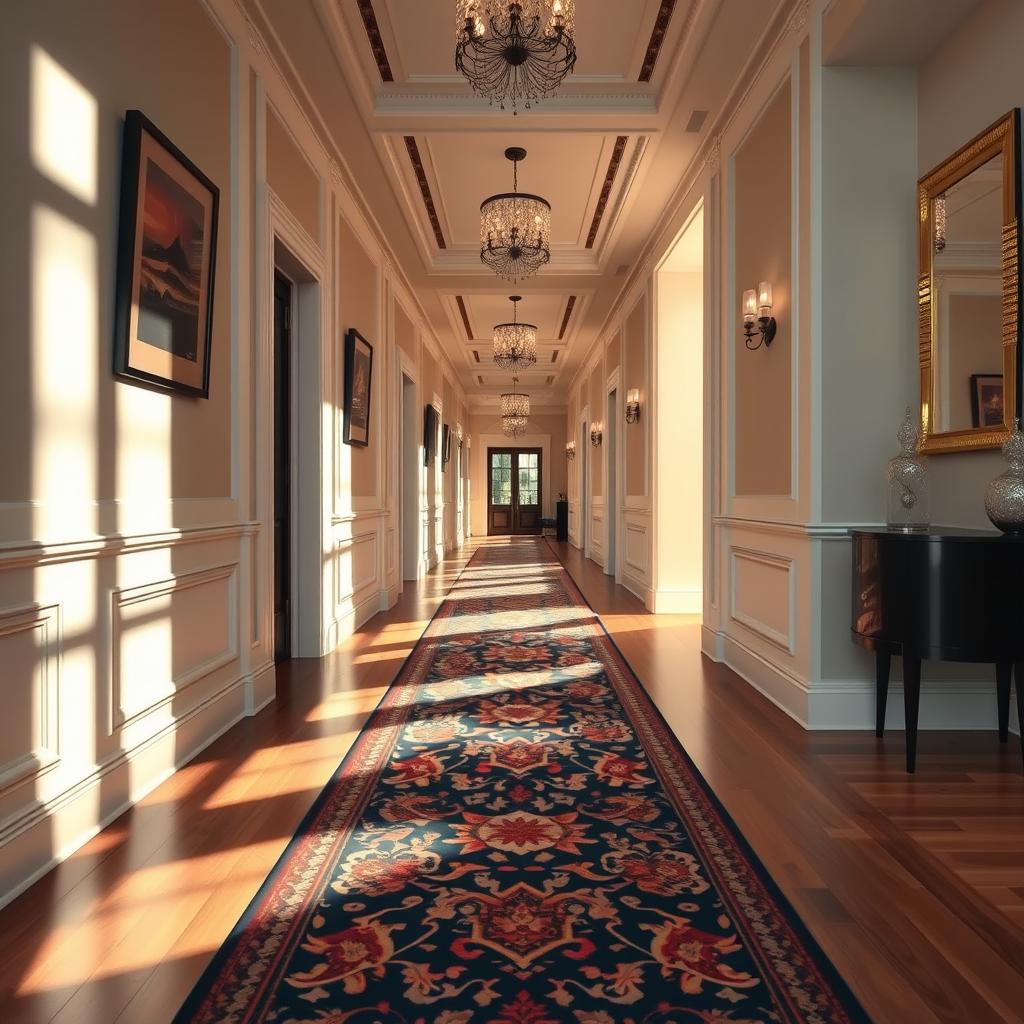
Choosing the right spot for your runner carpets can make your home look and feel better. It creates a beautiful and functional space.
How to Choose the Right Runner Carpet Style
Choosing the right runner carpet for your home is key. The runner rug for hallway or the runner carpet can make your living spaces look better. Think about color, pattern, and how it fits with your decor to find the perfect match.
Color Coordination
The color of your runner carpet is very important. Choose shades that match your walls, furniture, and other items. Neutral colors like beige, gray, or black are good choices. They work well with many things. But, bold colors can add personality and interest.
Pattern Possibilities
Runner carpets have many patterns, from simple to complex. Pick a pattern that fits your home’s style. Simple patterns can make a room look elegant, while bold designs can add drama.
Coordinating with Existing Decor
Make sure your runner carpet goes well with your decor. Look at the colors, patterns, and materials of your furniture and walls. This will help you choose a runner that makes your space look good together.
Think about these things to find the best runner carpet for your home. The right one can be a highlight and bring everything together.
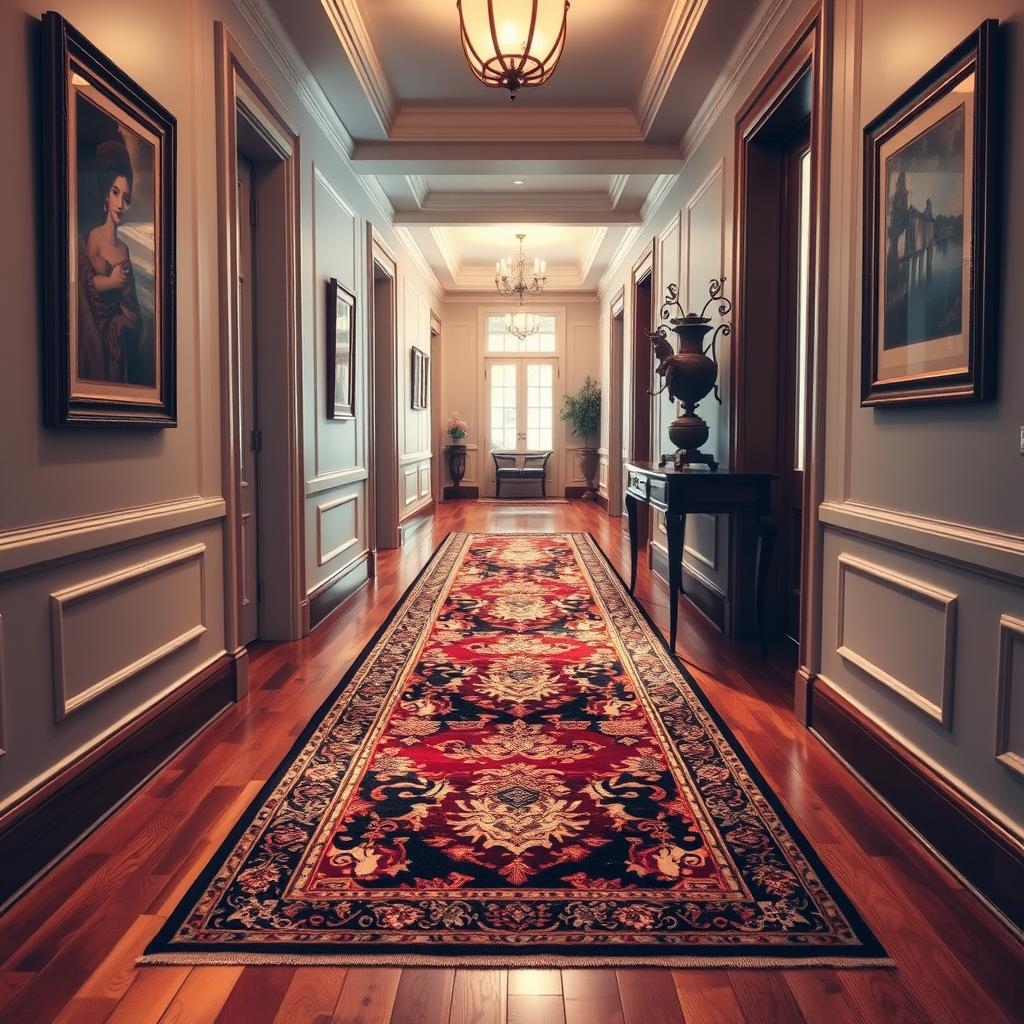
Installing Your Runner Carpet: Step-by-Step Guide
Changing your home’s look starts with the right flooring. A carpet runner is a great choice. This guide will help you, whether you’re doing it yourself or hiring a pro. It covers all the key steps for a smooth installation.
Required Tools and Materials
First, get all the tools and materials you need for your carpet runner job:
- Measuring tape
- Utility knife or scissors
- Knee kicker or carpet stretcher
- Carpet seaming tape
- Carpet tack strips
- Carpet padding (optional)
Installation Methods
There are a few ways to put in a carpet runner. Each method has its own benefits. Here are the most common ones:
- Tack Strip Installation: Use tack strips along the edges to secure the runner. This makes it fit perfectly.
- Double-Sided Tape: Stick double-sided tape to the floor. Then press the runner on for a fast setup.
- Adhesive Application: Spread carpet adhesive on the floor. Place the runner carefully for a strong bond.
Professional vs. DIY Installation
Choosing between a pro or DIY depends on your skills and project needs. A pro might cost more but guarantees a perfect job. Doing it yourself can save money and be fulfilling. Whichever path you take, measure well, follow the instructions, and stay safe. This will help you get the best results.

Maintenance and Care Tips for Runner Carpets
Keeping your runner carpets or indoor mats looking great takes some effort. But with the right cleaning and care, they can last for many years. Here are some key tips to keep your runner carpets in top shape.
Regular Vacuuming
Vacuuming your runner carpet regularly is crucial. Try to vacuum it at least once a week. If your home gets a lot of foot traffic, you might need to do it more often. This helps keep the carpet clean and looking good.
Spot Cleaning Stains
Accidents happen, but quick action can prevent stains from becoming permanent. For liquid spills, dab them with a clean cloth right away. For solid stains, carefully remove any extra before using a mild cleaner and a soft brush.
Professional Deep Cleaning
It’s wise to get your runner carpets professionally deep cleaned sometimes. This method gets rid of deep dirt and makes the carpet look new again. Try to do this every 12-18 months, depending on how much your carpet gets used.
Preventative Measures
- Use mats or rugs at entryways to catch dirt before it hits the runner.
- Rotate or flip the runner to spread out wear and tear.
- Don’t put heavy furniture or appliances on the runner to avoid damage.
By following these easy care tips, you can keep your runner carpets looking great for years. A little time and effort in maintenance will make sure your floor coverings stay stylish and comfortable in your home.
Design Ideas and Inspiration for Runner Carpets
Runner carpets can change the look of your home in many ways. They come in bright colors and interesting patterns. The right one can make any hallway or entryway look better. Here are some ideas to help you pick the perfect area rug or hallway rug.
Color Coordination Tips
The color of your runner carpet matters a lot. It should match the colors in the room. A dark, rich runner can make a hallway look fancy. A light, neutral one can make a narrow entryway feel bigger and brighter.
Pattern Selection Guide
Patterns on your runner carpet can make a big difference. Think about the size of your space and your home’s style. Geometric or traditional patterns can add elegance. Abstract ones can add fun. Choose a pattern that fits with your home’s look and makes the space feel better.
Runner carpets are great because they can change any area of your home. By picking the right color and pattern, you can make your space unique and welcoming. It will show off your personal style.
Cost Considerations and Budgeting
The cost of a runner carpet can change a lot based on several things. Knowing these can help you plan your budget better. The size, material, and quality of the carpet are the main things that affect the price. High-end materials like wool or silk usually cost more.
Also, how you install the carpet matters. DIY might save money, but think about your skills and any extra costs. Professional installation costs more upfront but ensures a perfect and lasting job.
To budget well, look up prices, compare them, and think about what you need and want. Finding a balance between quality and price is key. This way, you can get a carpet that looks great and fits your budget. With good planning, you can make a space that looks good and works well.
FAQ: The runner carpet is the ideal choice
What is the purpose of a runner carpet?
Runner carpets protect and cushion floors, making them quieter and more comfortable. They also add style to narrow spaces like hallways and entryways.
What are the different types of runner carpets available?
You can find runner carpets made from wool, synthetic fibers, and natural fibers. They come in many patterns, textures, and colors to match your taste.
What are the common dimensions and sizes of runner carpets?
Runner carpets usually range from 2 to 4 feet wide. They can be 6 to 20 feet long. Sizes vary based on the maker and the carpet’s purpose.
What are the benefits of installing runner carpets in my home?
Runner carpets make your home more comfortable and quiet. They protect floors and look great in hallways, staircases, and entryways.
Where are the ideal locations to place runner carpets in my home?
Place runner carpets in hallways, staircases, and entryways. They also work well in narrow spaces like kitchen counters or in front of fireplaces.
How do I choose the right runner carpet style for my home?
Think about color, pattern, and texture to match your decor. Measure the space and pick a size that fits well, leaving some extra on each side.
What is the process for installing a runner carpet?
First, measure the space and cut the carpet to size. Then, secure it with adhesive or double-sided tape. For best results, get a pro or follow DIY steps carefully.
How do I maintain and care for my runner carpet?
Vacuum regularly, clean spots, and deep clean now and then. Rotate or flip the carpet to prevent uneven wear. Follow the maker’s cleaning tips.
What design ideas can I incorporate when using runner carpets?
Runner carpets can enhance any room’s look. Match the color and pattern with your decor or use it to highlight a room area.
How much should I budget for a runner carpet?
Prices vary by size, material, and quality. Expect to spend $50 to $500 or more for a quality runner carpet, based on your budget and style.

